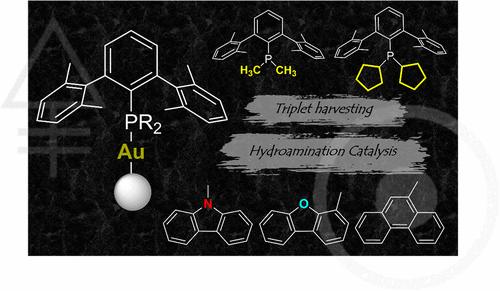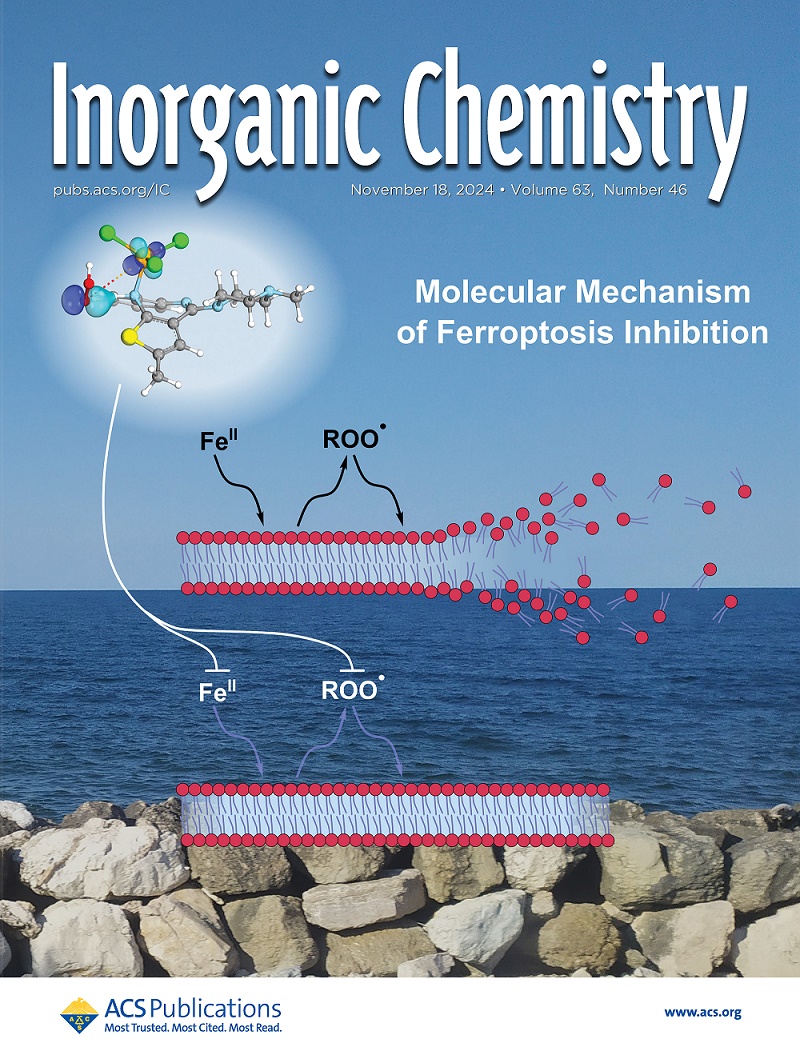Gold(I) Complexes with Bulky Phosphanes: A Dual Approach to Triplet Harvesting and Hydroamination Catalysis
IF 4.3
2区 化学
Q1 CHEMISTRY, INORGANIC & NUCLEAR
引用次数: 0
Abstract
Two families of mononuclear gold(I) complexes featuring Au-chromophore units, with chromophores being carbazole (a), phenanthrene (b), or dibenzofuran (c), were synthesized. The Au(I) atoms are coordinated to two phosphanes, either PMe2ArXyl2 (ArXyl2 = 2,6-C6H3-(2,6-C6H3–Me2)2) (P1) or the bulkier PCyp2ArXyl2 (Cyp = cyclopentyl) (P2). The photophysical properties of these complexes were extensively studied, with a particular focus on the effects of phosphane bulkiness and chromophore electron-donating capacity on triplet state quantum yields (ΦT). Nanosecond-laser flash photolysis measurements were employed to calculate ΦT. Time-dependent density functional theory (TD-DFT) calculations supported the absorption and emission assignments, providing insights into the electronic state gaps involved in photophysical processes and their relative populations. The parent complex AuClP2 in combination with NaBAr4F, as a chloride scavenger, served as an efficient catalyst for the hydroamination of a variety of alkynes and amines, under mild conditions and with low Au loading (0.1–0.2 mol %). Luminescent studies allowed us to check the active catalytic species.

求助全文
约1分钟内获得全文
求助全文
来源期刊

Inorganic Chemistry
化学-无机化学与核化学
CiteScore
7.60
自引率
13.00%
发文量
1960
审稿时长
1.9 months
期刊介绍:
Inorganic Chemistry publishes fundamental studies in all phases of inorganic chemistry. Coverage includes experimental and theoretical reports on quantitative studies of structure and thermodynamics, kinetics, mechanisms of inorganic reactions, bioinorganic chemistry, and relevant aspects of organometallic chemistry, solid-state phenomena, and chemical bonding theory. Emphasis is placed on the synthesis, structure, thermodynamics, reactivity, spectroscopy, and bonding properties of significant new and known compounds.
 求助内容:
求助内容: 应助结果提醒方式:
应助结果提醒方式:


